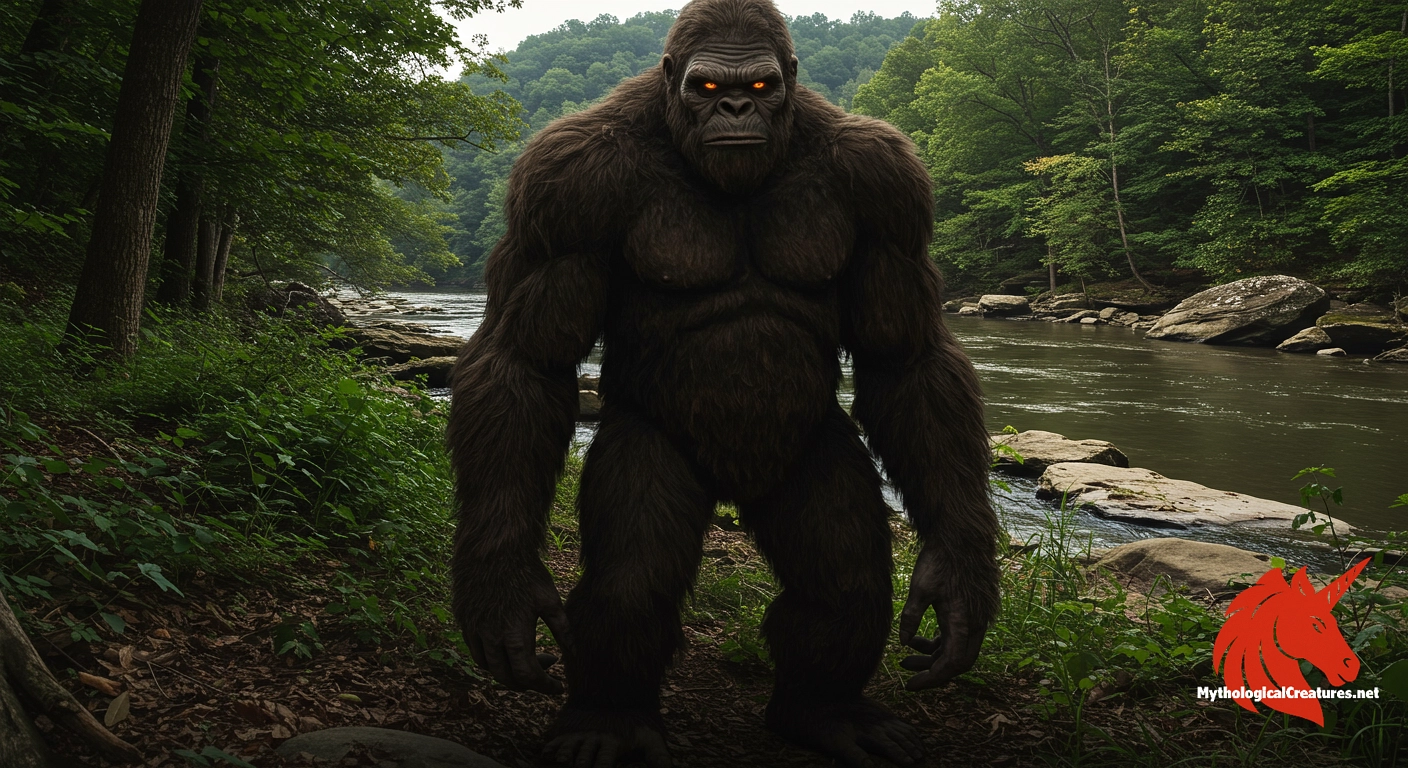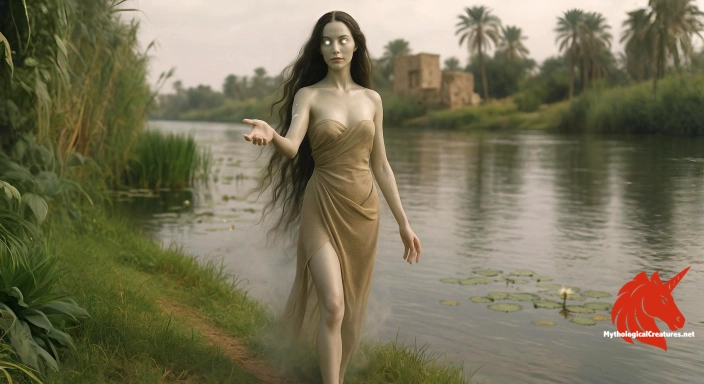Hillbilly Beast of Kentucky: The Hillbilly Beast of Kentucky is a legendary cryptid that roams the hilly woodlands of eastern Kentucky, bearing a striking resemblance to Bigfoot.

Hillbilly Beast of Kentucky
Hillbilly Beast of Kentucky - Embodies the mystery of the unknown in regional folklore and has spurred enduring local legends.
Origins & First Encounters
The Hillbilly Beast of Kentucky occupies a unique place in Appalachia’s rich tapestry of folklore, its legend woven into the fabric of rural life and mystery. Local narratives suggest that the creature may have been whispered about long before it became known in modern times, with oral traditions passed down through generations. Its reported habitat amidst the shadowy hills near the Ohio River lends an eerie authenticity to its tale. Many accounts describe encounters on moonlit nights when the beast appears as a fleeting silhouette against the dense woodland backdrop. The creature’s emergence in recorded stories during the mid-20th century coincides with a broader cultural fascination for cryptids, yet its roots seem to extend much further into the region’s past. Rural communities have embraced the legend not only as a fearsome figure but also as a symbol of the untamed wilderness. In recounting the myth, the interplay between nature and human experience is brought vividly to life, bridging factual detail with imaginative embellishment. The Hillbilly Beast serves as a reminder of the allure of unexplained phenomena and the enduring power of local myth-making.
Source Texts & Tale Variants
The primary sources relating to the Hillbilly Beast include a mix of early newspaper clippings, local journals, and a wealth of oral testimonies gathered from residents throughout eastern Kentucky. Many of these early accounts were transmitted around campfires and in quiet exchanges among neighbours, where tales of eerie shouts and strange silhouettes were shared with equal parts fear and delight. Detailed narratives have slowly surfaced in regional folklore anthologies and small-town histories, each adding unique nuances to its story. Some writings from local historians contain concise notes on sporadic encounters and the subsequent community reactions, while anecdotal evidence has been preserved in local archives. As the legend grew, scientists and cryptozoologists began to show interest, gathering and comparing disparate accounts from various sources. These differing renditions have resulted in a patchwork of details — from the creature’s vocalisations to its imposing physicality — that continue to intrigue researchers. The fragmented records highlight an essential aspect of the myth: its ability to evolve with each retelling. Variations in source materials underline how personal experience and regional style can colour even the most familiar legends over time.
Form & Powers
Eyewitness reports characterise the Hillbilly Beast as an imposing figure standing between eight and ten feet tall, exuding both raw physical power and an air of enigma. Descriptions often mention its dense, shaggy covering, which appears reminiscent of the fur associated with legendary Bigfoot accounts. Its most startling feature, however, remains the dark eyes that burn with an unmistakable orange glow under the cover of night. Observers have described a powerful build, with broad shoulders and long, sinewy limbs that hint at both strength and agility. Many accounts speak of an almost blurred facial appearance, making it difficult to discern clear features, thereby enhancing its mysterious allure. The creature’s vocal repertoire is equally notable; reports detail a series of shouts and the sound of heavy, resonant bangs on nearby trees during nocturnal excursions. Each physical detail, from the texture of its hair to the mannerisms in its movements, contributes to the composite image of a being both human and primordial. Altogether, the creature’s physical portrayal remains a vibrant mix of well-established myth and the intriguing unknown, inviting further speculative examination.
Regional Faces
Rooted deeply in the hills of eastern Kentucky, the Hillbilly Beast has acquired layers of regional specificity that distinguish it from similar legends elsewhere. Different communities have added their own flair to the narrative, resulting in variations that occasionally portray the creature as either a dark omen or a nocturnal guardian of the woods. In areas where the natural landscape remains largely untamed, the beast is often cited as a protector of local lore, a figure that watches over the hidden glens and misty hollows of Kentucky’s backcountry. In contrast, other localities emphasise its more sinister aspects, recounting tales of unexpected shouts and the disruptive sound of tree-banging that punctuate quiet evenings. These regional adaptations mirror the diverse expectations and superstitions held by isolated mountain communities steeped in tradition. The landscape itself, with its dense forests and steep hillsides, often becomes a character in the tale, lending context and life to the myth. Distinct local dialects and storytelling traditions further colour the creature’s identity, showcasing how environmental intimacy shapes myth-making. Consequently, the Hillbilly Beast has grown beyond a single narrative, embodying the collective memory of a region that remains as enigmatic as the creature itself.
Cultural Parallels
The Hillbilly Beast of Kentucky stands as a compelling counterpart to other mythological figures, sharing significant similarities with the iconic Bigfoot of North America. Like many cryptids, it occupies the liminal space between human culture and the wild, serving as both a cautionary tale and an emblem of uncharted nature. In comparison to other legendary figures such as the Yeti of the Himalayas, the creature presents a distinctly American visage of mystery, blending regional traditions with a universal appeal. Much like the wild men of European folklore, its depiction straddles the realms of human familiarity and animalistic otherness, provoking both fear and fascination. The recurring themes of immense size, elusive behaviour, and night-time manifestations place the Hillbilly Beast firmly within the global tableau of mysterious creatures. Its reported vocalisations and disruptive movements also echo ceremonial elements found in other cryptid legends, thereby strengthening cross-cultural bonds. The comparative study of such creatures reveals how societies worldwide use the myth of the wild man to articulate their relationship with nature. In these ways, the Hillbilly Beast not only reflects local traditions but also participates in a broader, transcontinental dialogue about humanity’s enduring fascination with the mysterious and the unknown.
Legacy & Modern Evolution
Over the decades, the Hillbilly Beast of Kentucky has moved from the realm of whispered local lore to become a storied figure in modern popular culture. The evolution of its myth mirrors changes in media and the growing interest in cryptozoology, with documentaries, podcasts, and online forums all contributing to its continued presence. Regional festivals and themed events have embraced the legend, celebrating the creature as a quirky emblem of local identity and wilderness mystique. Contemporary depictions often merge elements of genuine cryptid intrigue with a sense of humour, reflecting an evolving attitude towards such extraordinary tales. The narrative is continually reworked by a new generation of storytellers who blend modern technology with age-old myth, enhancing its allure for both sceptics and believers. Art installations, local merchandise, and even social media trends have further cemented the creature’s status as a cultural icon. Its modern legacy takes on a dual role, representing both the enduring wonder of unexplained phenomena and the vibrant, evolving tradition of American folklore. Ultimately, the Hillbilly Beast remains a testament to the power of myth in capturing the imagination amid ever-changing social landscapes.
Interesting Fact
Although it shares many characteristics with Bigfoot, the Hillbilly Beast of Kentucky is uniquely intertwined with Appalachian folklore, evidenced by its distinctive glowing eyes and the specific regional legends that surround its alleged appearances.
Quick Creature Info
Origin:
Features:
Our Mythic Legendary Rating:

Also Sometimes Known As:
Habitat:
Supernatural Powers:
Physical Attributes:
Abilities:
Behavior:
Lore:
Related Creatures, Tales or Lore
References
Discover Another Mythical Legend You May Not Have Heard Of?
Uncover the mysteries of ancient folklore and expand your knowledge of legendary beings from cultures around the world.
Dare to Meet the El Naddaha....
Mythical Disclaimer: The images and data on this site are derived from various historical and literary sources, but we have found that many myths often have multiple versions and interpretations across references, sometimes contradictory. As a result, these creature depictions are artistic interpretations—imaginative blends of folklore, legend, and a dash of AI guesswork. Because creature descriptions vary widely, our illustrations and accompanying information represent our best effort to honor mythology while bridging creative gaps. Enjoy these interpretations—just remember, we've done our best to respect the stories and validate available data, but in the realm of mythology, details often shift, imagination leads the way, and nothing is ever set in stone!
Curated by the Mythological Creatures Team (rev. May 2025)
